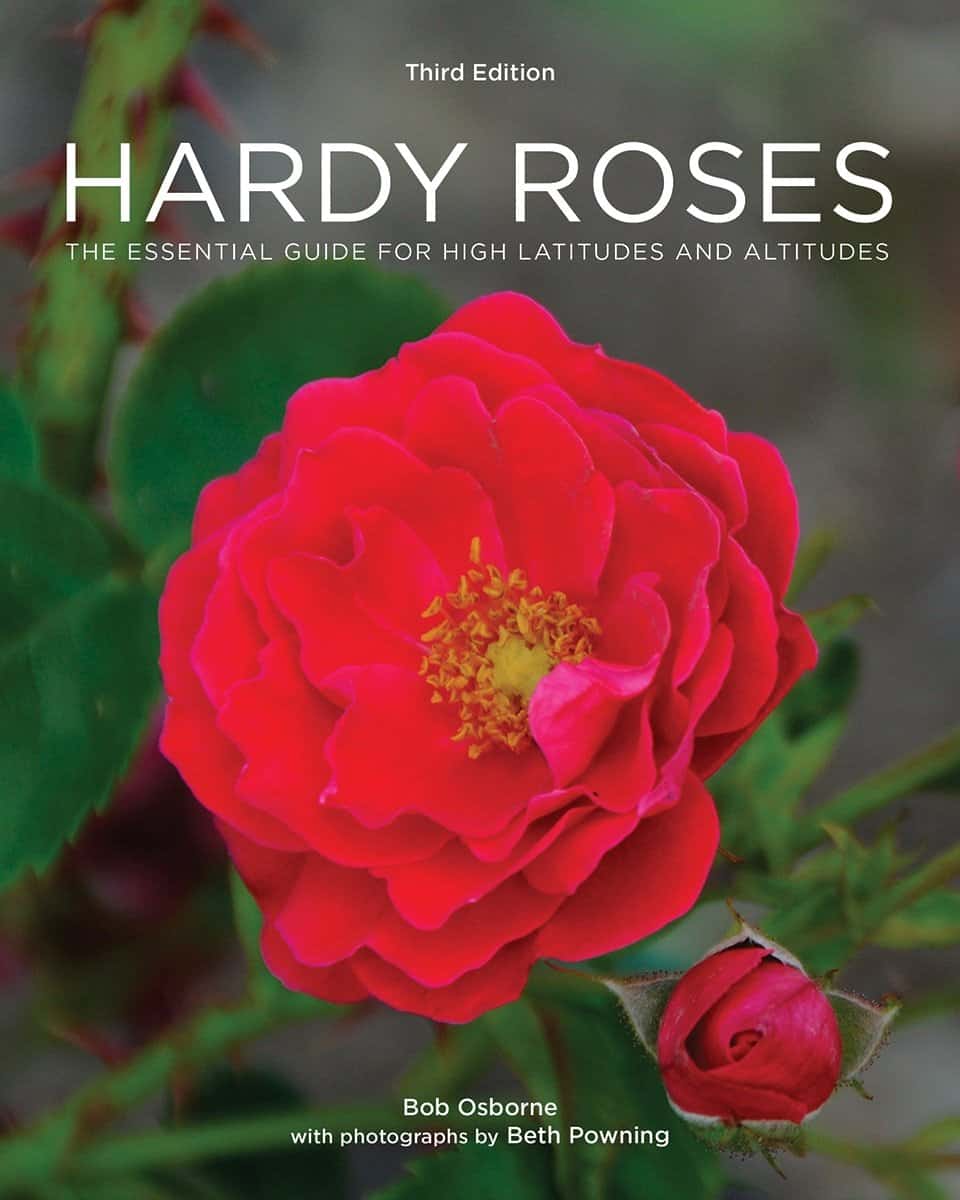Books about roses are plentiful, often filled with beautiful photos taken in grand gardens, but light on practical information. Then, there are those that are reprints of editions that originated in the UK, where growing conditions are more favourable than in North America.

In Canada, we’re lucky to have Hardy Roses: The Essential Guide for High Latitudes and Altitudes, by Bob Osborne. In 2020, we have a new edition – the third – of Osborne’s rose guide first published in 1991. Osborne, owner of Corn Hill Nursery in New Brunswick, has grown all of the roses he writes about, notably in harsh winter conditions without insecticides.
Each edition of this classic gets better — more hardy roses (now more than 100 cultivars) profiled, and more growing information on planting, wintering over and pruning. There are detailed instructions on propagating roses and how to fend off diseases and pests, although most of Osborne’s recommendations are disease-resistant.
The book doesn’t lack for gorgeous photos. Beth Powning, a full-time writer and author of three novels who also lives in New Brunswick, is responsible for the images in this new edition.
“The roses in this book are those my nursery has grown for decades, or at least several years for newer cultivars,” Osborne writes in the introduction. “We believe their performance shows them capable of growing in cold country gardens, or gardens anywhere… I am confident that this list offers the northern grower a great number of superb, diverse roses from which to choose.”
Order Hardy Roses guide
Published by Firefly Books; 206 pages; $24.95 list price.
Buy Hardy Roses from ChaptersIndigo.ca
BuyHardy Roses from Amazon.ca
Buy Hardy Roses from BookShop.org (only in U.S.; supports independent book sellers)
Winner of a copy of Hardy Roses
Congratulations to Sharon G. of Brantford, Ontario, whose name was randomly selected from 645 entries in our June 2020 draw to receive in the mail a copy of Hardy Roses.
View the current draws or our history of prize winners.

Very interested in roses. Thank you for intro.
I wait for and read your newsletter with enthusiasm. I have One David Austin white rose and climbing ones as I am creating an ALL white garden.
Thank you for all you time and energy in getting your publication out to us.
Hi. I really enjoy your news letter . Beautiful pictures and articles are full of wonderful information . I still miss that beautiful magazine coming to mail box every other month with the frameable cover. I thank you for keeping all your garden knowledge coming our way. Thank you. Doreen Nova Scotia
I have hybridized roses here in Elmsdale , N. S. for the past 35+ years . One of my roses caught Bob’s eye & now is in his new book , he also sells it . We call it ,”Lavender Bouquet ” , a pink , fading to lavender Rambler of large mature growth . Great to cover an eyesore or difficult area on a property . 100 % maritime winter hardy . I believe I have created a new rose category that has been tested down to zone 2 here In Canada . Most hybridizers are satisfied to realize one good , perhaps commercial quality rose from a 1,000 seedlings . With the mother bushes I developed many dozens of good seedlings/ thousand are the norm . Very hardy , recurrent bloom, disease resistant & colors to knock your hat off In sizes from 2×2 ft. to 5×5 ft. .Most are cluster flowered , similar to the polyantha variety but mine are far more hardy .
We have roses like Queen Elizabeth and the little bushes and they are all perennials. They bloom profuciently but the leaves are eaten by aphids. These leaves look like lace. I used a mix. of Epsom salt and fertilizer that I put at the root and sprayed them with 1 teaspoon of lemon soap in 1 liter of water. It was not working too much. Then I sprayed them again with 1/2 water and 1/2 rubbing alcohol. This one was today. I hope it will work. I believe that your book would be very helpful for my our roses.